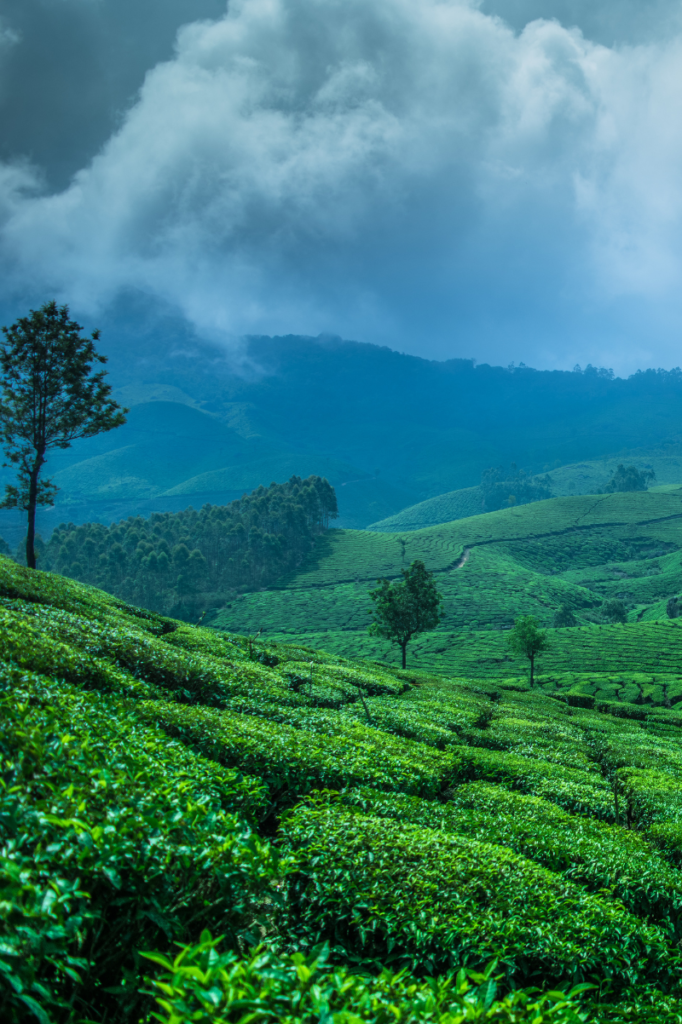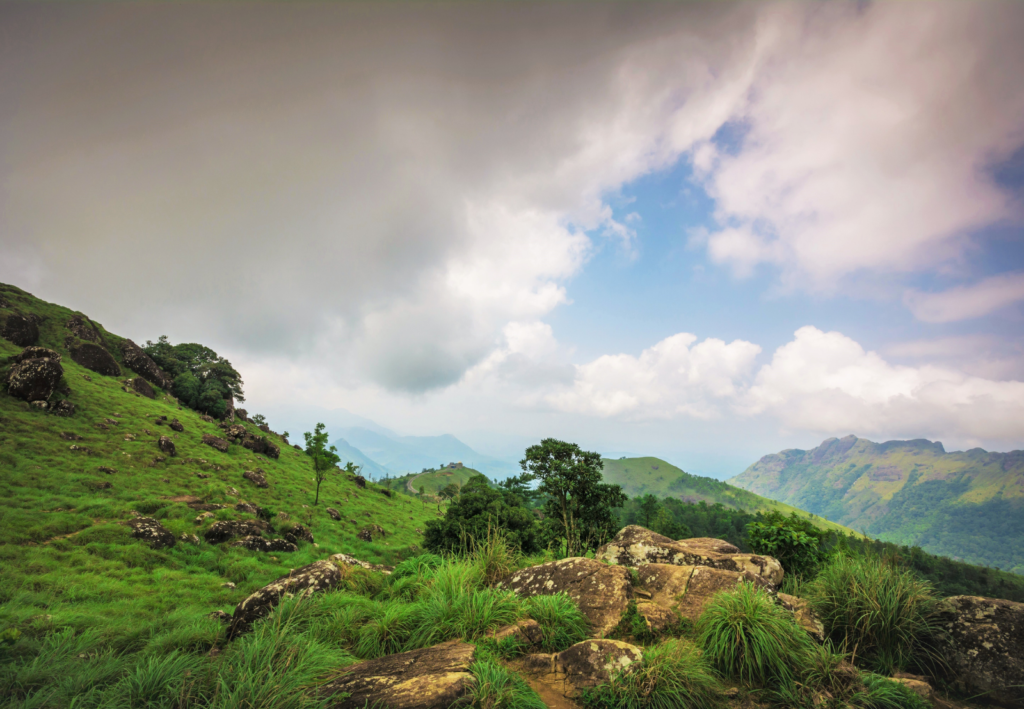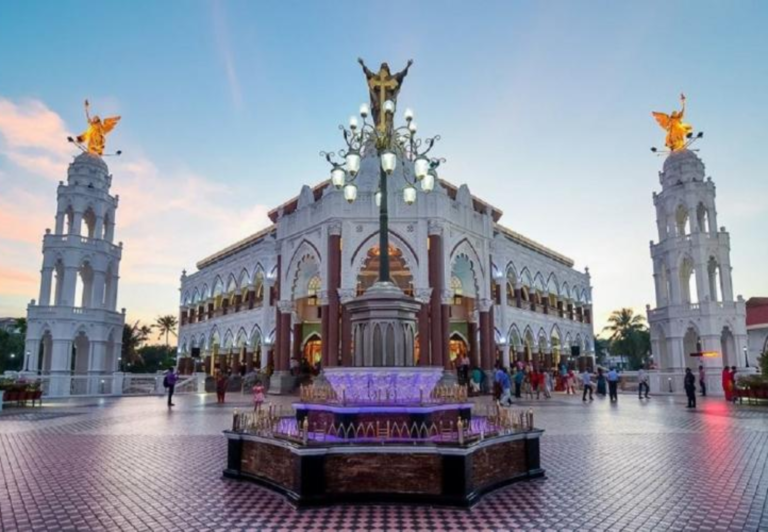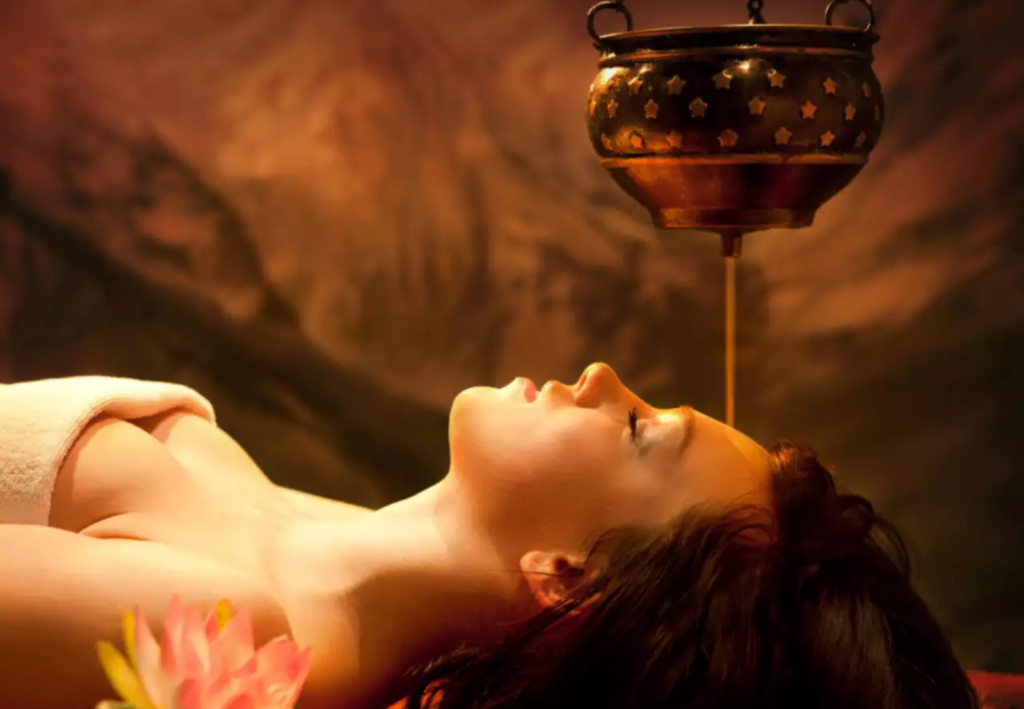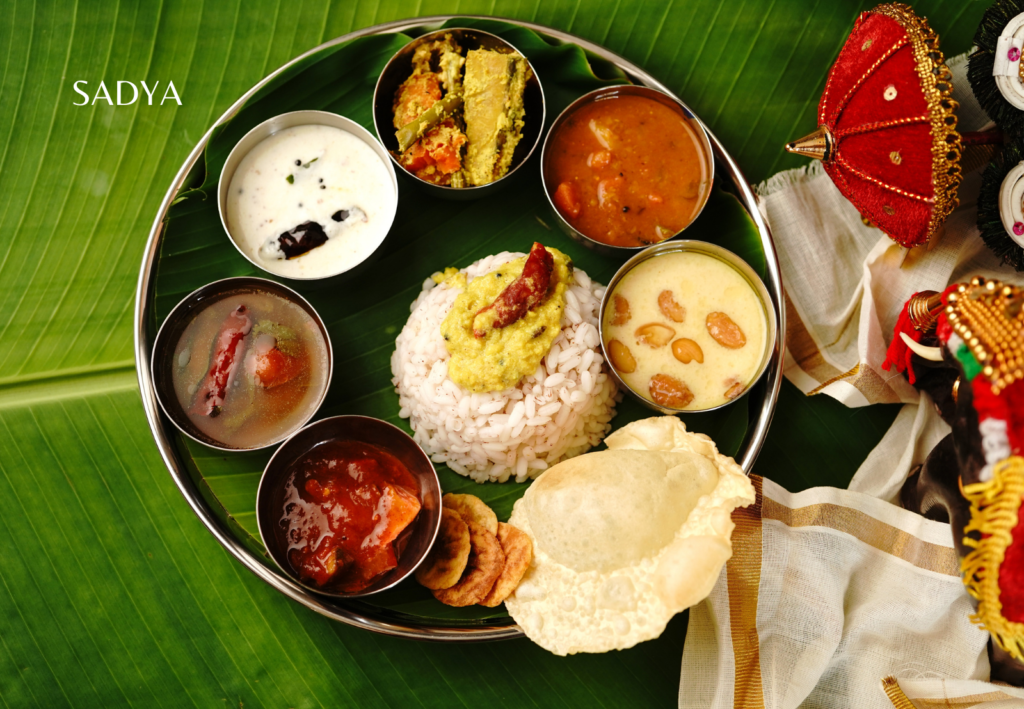God’s Own Country: 6 Beautiful- Unique Features That Define Kerala.
"
In this article, you will witness the feel of the unique natural beauties of Kerala. You will also learn about rich traditions through various mythological and historical references. Know the cuisines and people’s lifestyle of God’s Own Country.
Let's dive right in..
Beautiful backwaters, stunning hill stations, pristine beaches, and lush green landscapes all in one place.
Can you guess the destination that offers such a diverse range of captivating features?
Well, let me take you on a journey where tranquil houseboat rides on the backwaters, breathtaking views from mist-covered mountains, sun-kissed shores, and lush plantations await you.
Known as “God’s Own Country,” It’s a place where traditions come alive through vibrant festivals, where the aroma of spices fills the air, and where the warm hospitality of the people makes you feel like you’re a part of their big, happy family so if you haven’t guessed it already,
Welcome to the enchanting land of Kerala, a true gem on the Southwestern coast of India!
Six Things that Make Kerala Beautiful
1. Breathtaking Landscapes:
1.1 Tranquil Backwaters
Peaceful canals, surrounded by lush green fields and swaying palm trees. Well, that’s exactly the vibe of Kerala’s famous backwaters.
Kerala boasts a network of backwaters that covers around 900 kilometers. It’s an extensive maze of interconnected canals, lakes, and rivers that connect picturesque villages and lush green landscapes.
Places like Alleppey and Kumarakom offer the perfect opportunity to experience these serene and beautiful waterways.
You can board a traditional houseboat, known as a Kettuvallam, and let the gentle ripples transport you to a place of serenity and peace. You can also venture further to places like Kumarakom, Kollam, and Kasaragod to witness the diverse beauty of these interconnected water bodies.
1.2 Charming Hill Stations
When you venture into the Western Ghats, you’ll come across the enchanting hill stations of Kerala.
One of these gems is Munnar, and trust me, it’s a sight you don’t want to miss.
Imagine endless stretches of vibrant green tea plantations as far as the eye can see. The tea bushes are dotted with colorful flowers, creating a mesmerizing view that’s even more magical when surrounded by misty mountains.
Tucked away in the Western Ghats, Ponmudi is a lesser-known gem that offers breathtaking vistas and a serene atmosphere.
The winding roads leading up to this hill station are adorned with stunning viewpoints where you can catch panoramic views of the surrounding valleys and tea estates.
Now, let’s talk about Wayanad, another hill station that’s simply amazing.
It’s famous for its stunning valleys and breathtaking waterfalls. When you’re there, you can escape from the hustle and bustle of everyday life and soak in nature’s serenity.
Stroll through the valleys and let the sight of cascading waterfalls leave you in awe. It’s the kind of place where you can truly relax and feel at peace, surrounded by nature’s beauty.
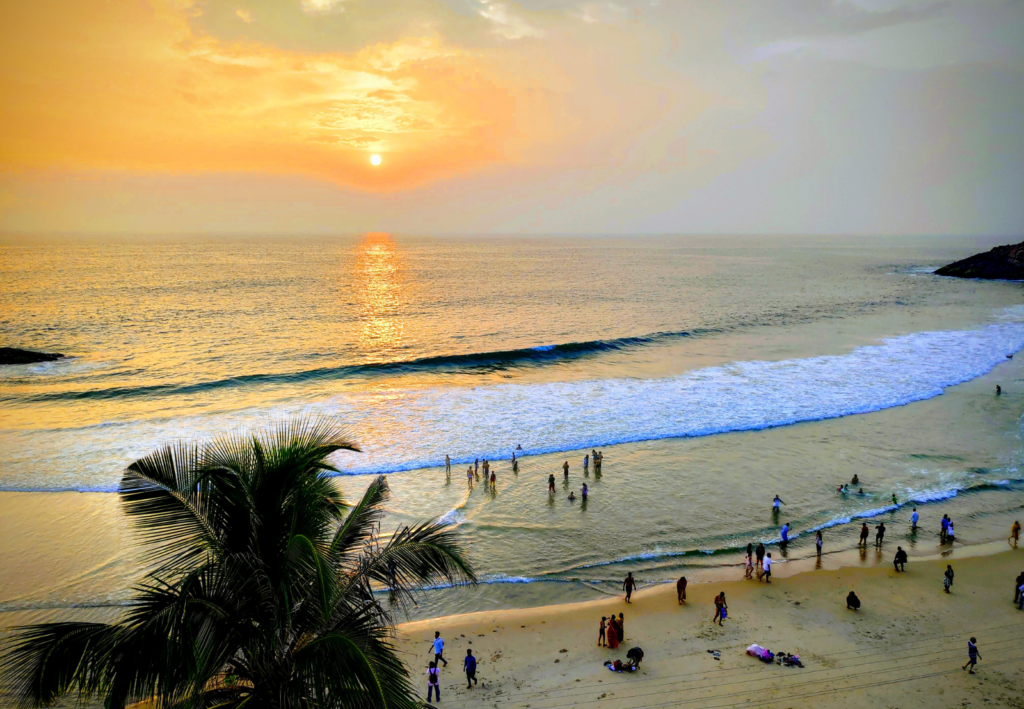

1.3 Pristine Beaches
And let’s not forget about the pristine beaches that Kerala offers.
They’re like straight out of a postcard! The sand is soft and golden, and the water is so clear you can see right through it.
Whether you want to take a dip, sunbathe, or simply walk barefoot along the shore, Kerala’s beaches have got you covered!
If you’re an adrenaline junkie, head to Kovalam Beach, known for its thrilling water sports like surfing and parasailing.
On the other hand, if you’re seeking tranquility, you can find secluded and less crowded beaches like Marari and Bekal, perfect for a peaceful getaway or a romantic evening stroll.
It doesn’t stop here!
These beaches also offer a unique natural phenomenon called the “Snehatheeram,” which translates to “Love Shore.”
During certain times of the year, the sea retreats and reveals a heart-shaped sand formation on the coast of Varkala Beach, leaving visitors enchanted by the whimsical display of nature’s love.
Kerala’s coastline stretches for about 590 kilometers, offering an array of pristine beaches, each one of which is unique in its own way, so explore and find just the right pick for you!

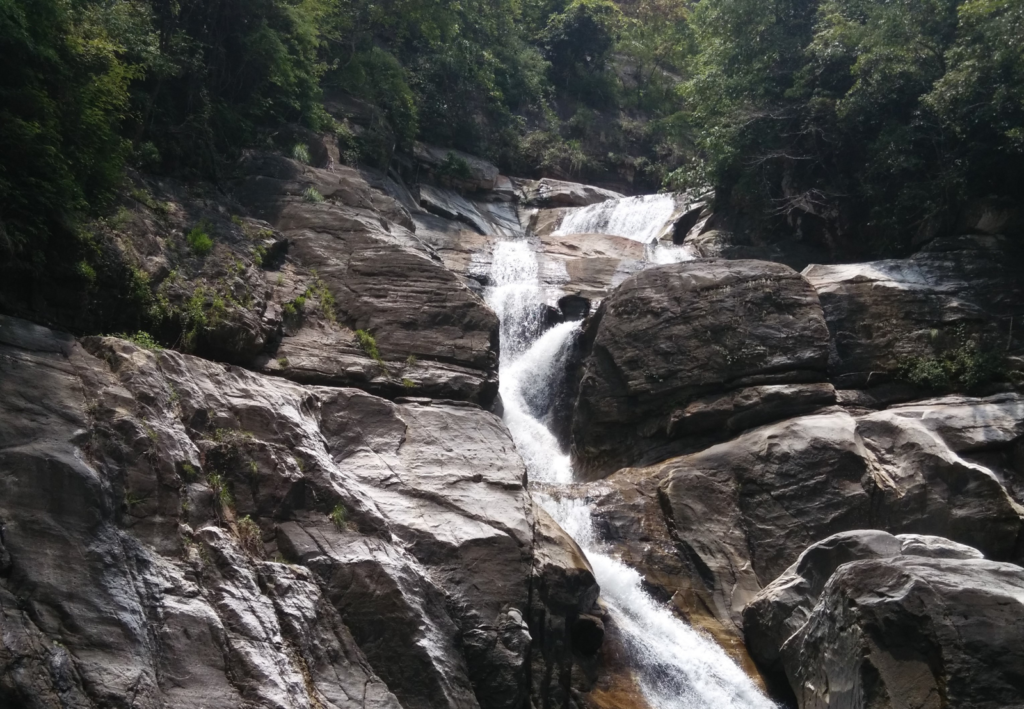
1.4 Enchanting Waterfalls
Alright, let’s turn our attention to the incredible world of waterfalls!
Kerala is blessed with an abundance of these jaw-dropping waterfalls that will leave you in awe.
The best thing about Kerala’s waterfalls is that they are easily accessible and, thanks to the abundant rainfall in the area, can be visited throughout the year. They are well-maintained, with clear paths and viewpoints to enjoy the stunning views of the waterfalls.
One of the most treasured waterfalls in Kerela is the Athirappilly Falls, located near Thrissur, often called the “Niagara Falls of India”?
It’s no surprise, given its majestic height of approximately 80 feet and the sheer volume of water thunders down its rocky cliffs.
This powerful spectacle has even attracted filmmakers, with scenes from popular movies like Dil Se, Raavan, Pukar, and Kuch na Kaho being shot against the backdrop of this magnificent waterfall.
In recent years the waterfall has become famous as Bahubali Falls because the most dramatic scenes of the movie Bahubali were shot here.
For adventure enthusiasts, Kerala’s waterfalls offer more than just scenic beauty.
With a height of around 200 feet, Soochipara Falls in Wayanad, known as the “Sentinel Rock Waterfalls” due to the large rock formations that guard the cascades, is a popular spot for adventure enthusiasts who can indulge in activities like rock climbing and trekking in the surrounding area.
And let’s not forget about the pools formed at the base of the waterfalls.
These inviting natural pools are perfect for a refreshing dip, allowing visitors to cool off and rejuvenate amidst the captivating beauty of their surroundings.
One of the tallest waterfalls in Kerala, the 300 feet Meenmutty Falls is a true spectacle to witness, surrounded by lush greenery and offering a sense of tranquility that is simply magical.
Lastly, the Palaruvi Falls in Kollam, known as the “Milky Cascade,” is a stunning waterfall with a height of around 300 feet, creating a mesmerizing white veil as the water elegantly descends the rocks.
Palaruvi Falls gets its name from the Malayalam words “Pala,” meaning “Milk,” and “Aravi,” meaning “Stream,” aptly describing its milky appearance.
It’s a place where you can truly immerse yourself in nature’s beauty and find solace amidst the serene surroundings.
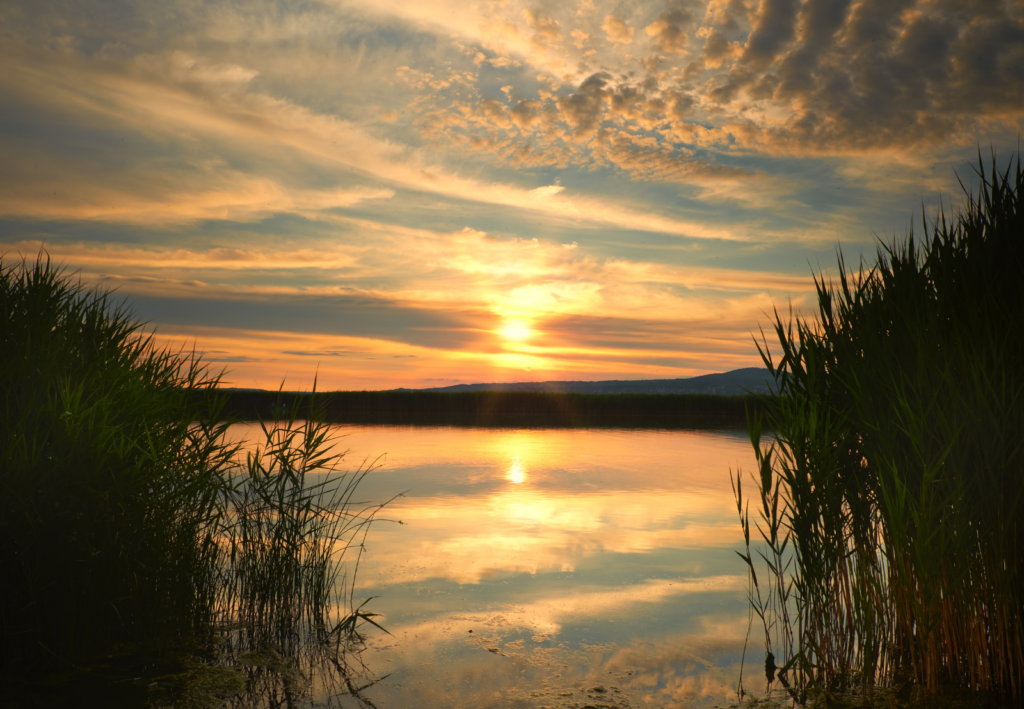
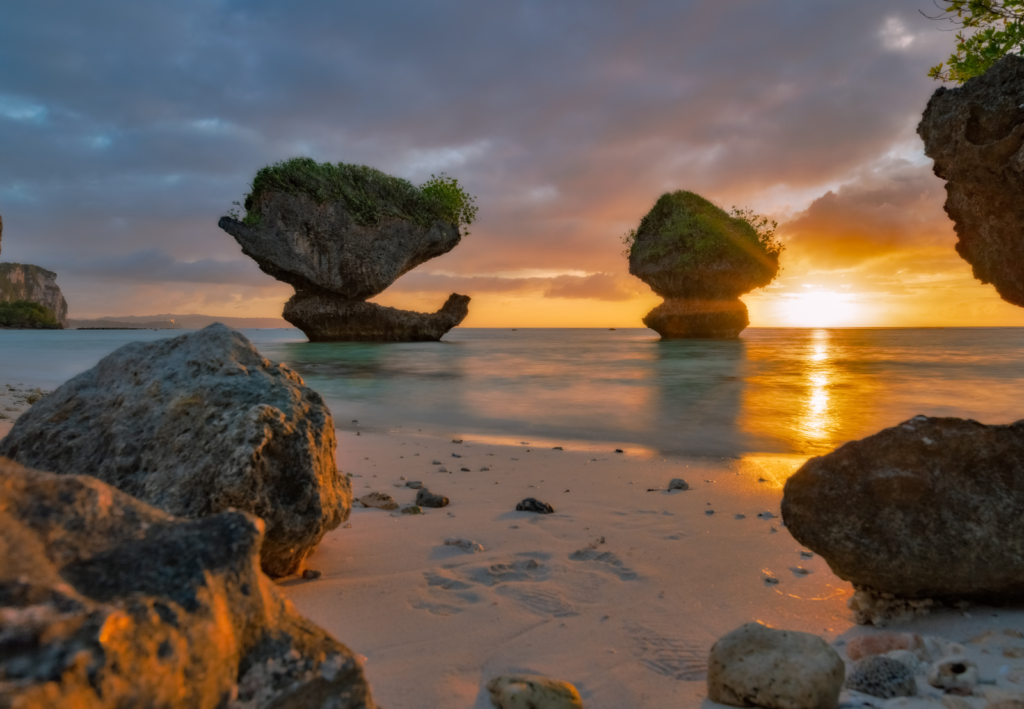
1.5 Vibrant Sunsets:
Did you know that Kerala’s atmospheric conditions and geographical location contribute to its spectacular sunsets?
The region’s proximity to the equator and its tropical climate creates the perfect setting for vibrant and colorful evening skies.
The warm and humid air enhances the intensity of the colors, making Kerala’s sunsets genuinely remarkable.
The sky turns into a stunning painting, with shades of orange, pink, and purple blending together.
It’s like nature’s own Instagram filter, giving you the perfect backdrop for those envy-inducing sunset photos.
But the vibrant sunsets of Kerala aren’t just about the colors in the sky.
It’s the whole experience that makes it truly special. The cool breeze, the sound of waves crashing gently on the shore, and the feeling of being in harmony with nature—all add to the moment’s magic.
So, whether you find yourself on the sandy shores of Kovalam Beach, atop the cliffs of Varkala Beach, or gliding through the backwaters of Alleppey, be sure to take a moment to witness the vibrant sunsets of Kerala!
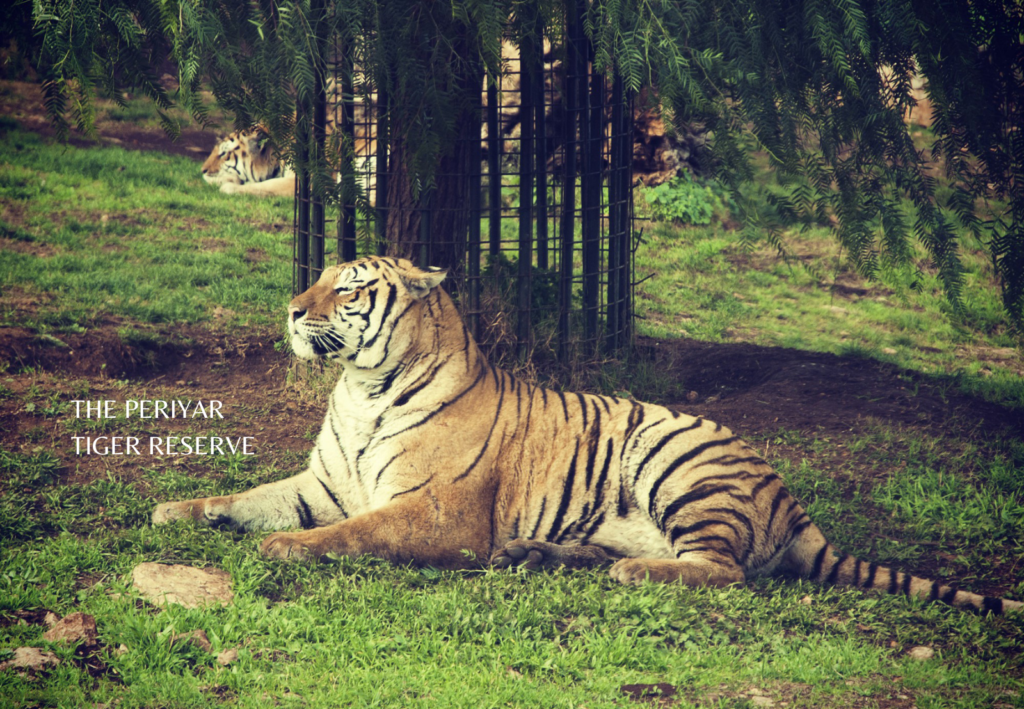
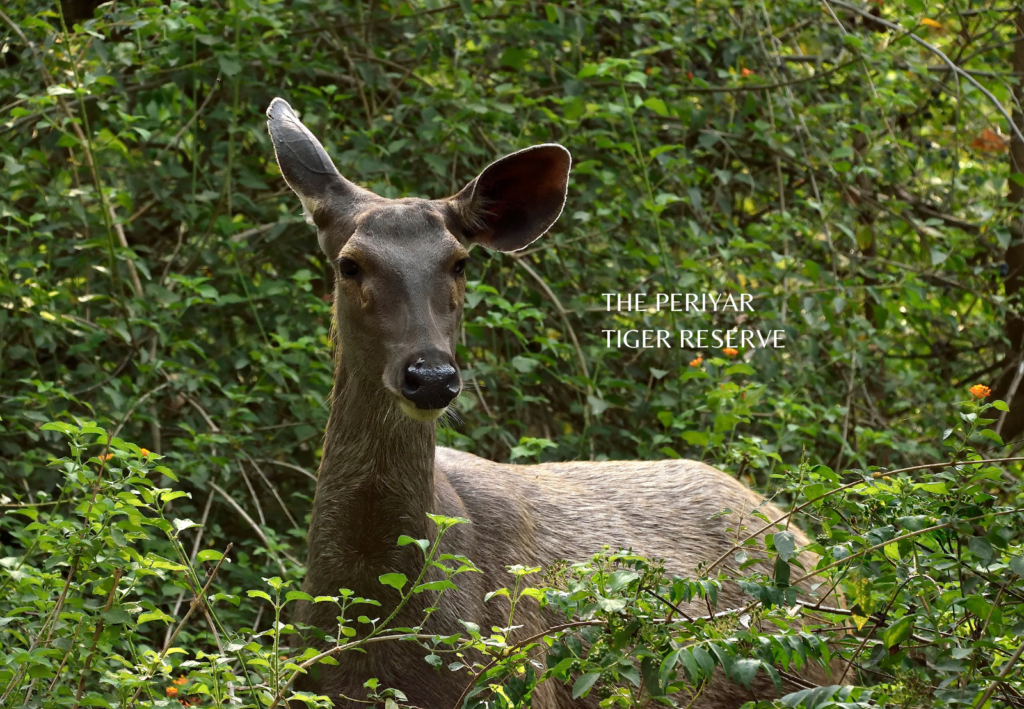
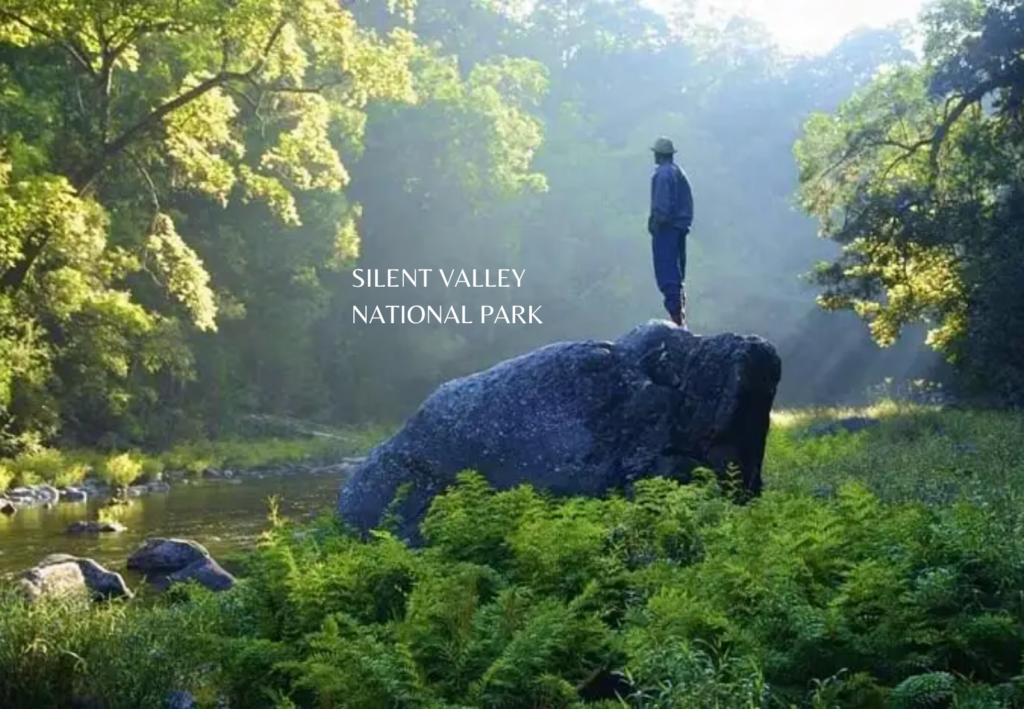

2. Exotic Wildlife and Rich Diversity
Kerala is blessed with rich and diverse wildlife that adds to the state’s natural beauty.
From majestic elephants to elusive tigers and colorful bird species, Kerala’s wildlife offers a fascinating glimpse into the region’s biodiversity.
One of the most iconic wildlife sightings in Kerala is the mighty Indian elephant.
These gentle giants roam freely in the forests and national parks of the state. Imagine coming face to face with these magnificent creatures as they gracefully move through the lush greenery!
But elephants aren’t the only stars of Kerala’s wildlife scene.
The Periyar Tiger Reserve in Thekkady is home to the elusive and majestic Royal Bengal Tiger. The reserve also boasts a wide variety of other wildlife, including leopards, sambar deer, and Indian bison.
Silent Valley National Park, a pristine rainforest, is a treasure trove of biodiversity, housing rare flora and fauna that will leave nature enthusiasts in awe.
Did you know Kerala is also known as the “Land of the Lion-tailed Macaque”?
This endangered primate species, with its distinctive silver mane and lion-like appearance, can be found in the Western Ghats of Kerala.
Spotting these fascinating macaques swinging through the treetops is a treat for any nature enthusiast!
Another intriguing resident of Kerala’s wildlife is the Nilgiri Tahr. With its curved horns and sturdy build, this mountain goat species is found in the high-altitude grasslands of the Western Ghats.
Eravikulam National Park in Munnar is a prime location to observe these beautiful creatures in their natural habitat.
Now, let’s head to the backwaters and coastal regions of Kerala, where you’ll encounter a wide variety of marine life.
The Arabian Sea is home to playful dolphins that love to show off their acrobatic skills.
Take a boat ride along the coast, and if you’re lucky, you might witness these intelligent creatures leaping and twirling in the waves!
Kerala is also a paradise for birdwatchers.
The Kumarakom Bird Sanctuary, nestled on the banks of Vembanad Lake, attracts a wide array of avian species.
From elegant egrets and colorful kingfishers to the iconic Indian darter, this sanctuary offers a glimpse into the vibrant world of Kerala’s birdlife.
Kerala’s rich biodiversity results from its diverse ecosystems, ranging from tropical rainforests and evergreen forests to wetlands and coastal regions.
The state takes pride in its conservation efforts, with many national parks and wildlife sanctuaries dedicated to protecting and preserving the natural habitats of these incredible creatures.
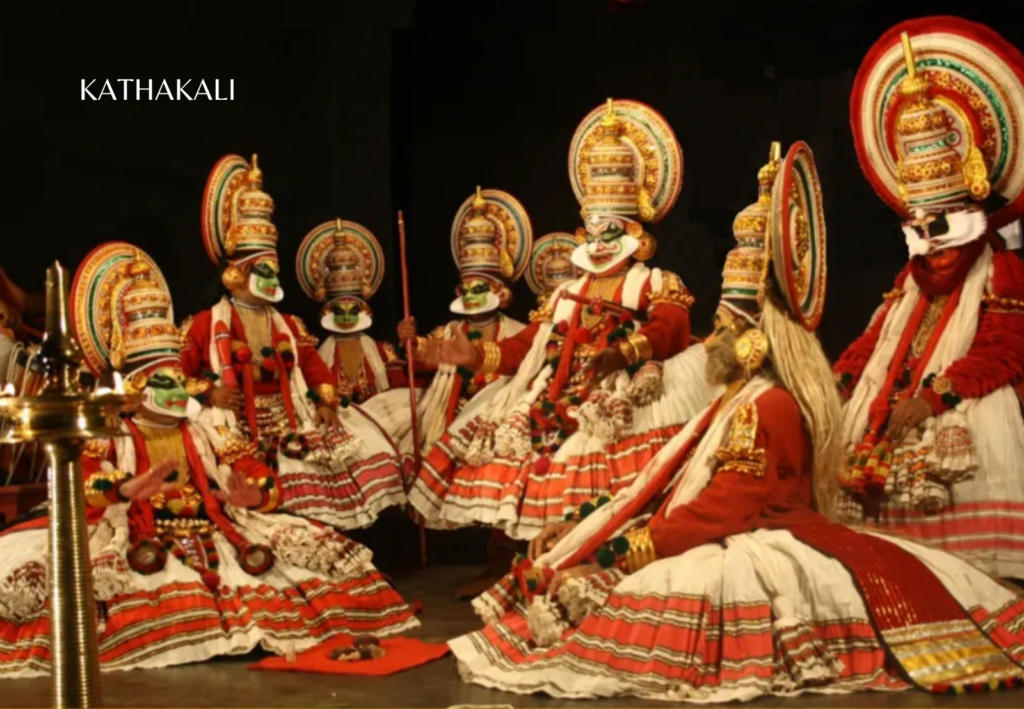


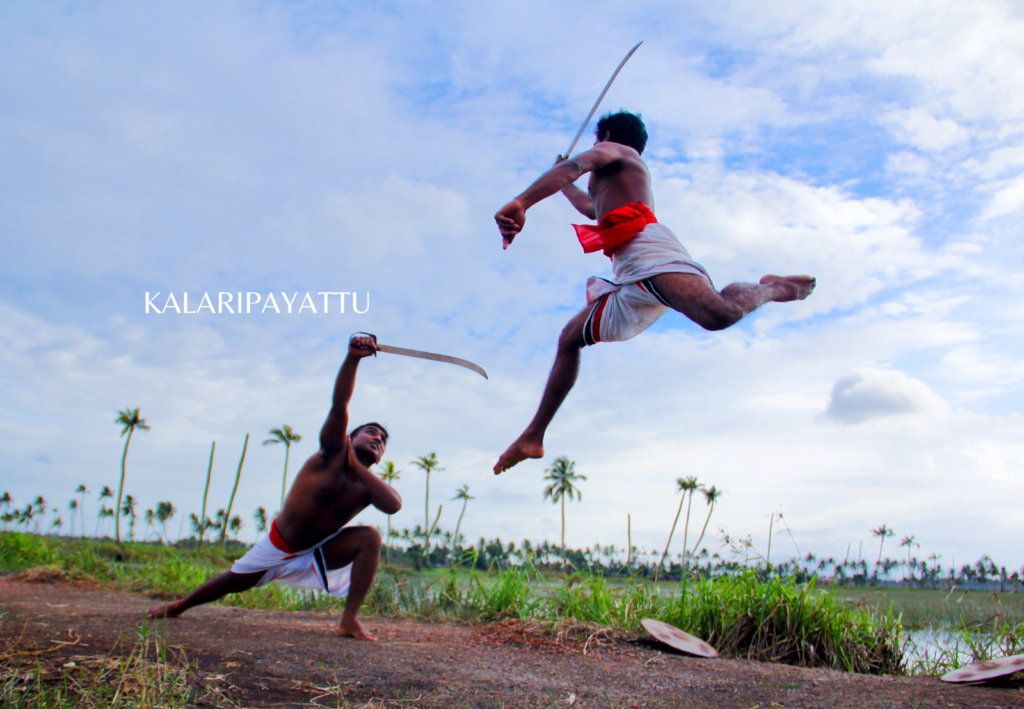
3. Cultural Heritage and Traditions
Kerala is renowned for its rich cultural tapestry, with a blend of influences from various communities that have shaped its identity. This is where ancient traditions and customs come to life, adding a touch of charm and uniqueness to the state.
One of the most iconic cultural practices is the art form of Kathakali.
Picture this: performers dressed in vibrant costumes, wearing elaborate makeup, and showcasing mesmerizing dance movements.
Kathakali is a visual extravaganza that tells stories from ancient epics like the Ramayana and Mahabharata. It’s like stepping into a different world of drama and artistic expression.
Another classical dance form called Mohiniyattam is also an essential token of the rich heritage of Kerela.
It’s a graceful dance performed by women, characterized by fluid movements, intricate hand gestures, and expressive storytelling.
Mohiniyattam is said to have originated from the divine dance of Mohini, an avatar of Lord Vishnu, and it continues to enchant audiences with its elegance and charm.
One of the iconic cultural symbols of Kerala is the Theyyam ritual.
It’s a unique form of worship where performers, adorned in vibrant costumes and intricate makeup, transform into deities and mythical characters.
Theyyam is believed to bring blessings and divine intervention to the community, and witnessing a Theyyam performance is like stepping into a world of ancient rituals and spiritual hunger.
Did you know that Kalaripayattu, a traditional martial art form, is believed to be one of the oldest fighting systems in existence?
It combines physical agility, self-defense techniques, and weaponry skills. Kalaripayattu has been practiced in Kerala for centuries and is considered a cultural treasure that showcases the state’s martial prowess and discipline.
When it comes to traditional attire, Kerala is famous for its Kasavu sarees. These sarees are characterized by their elegant off-white fabric with gold-bordered edges, and they hold great significance in Kerala’s cultural fabric.
The Kasavu sarees are often worn during special occasions, festivals, and weddings, adding a touch of grace and tradition to the attire.
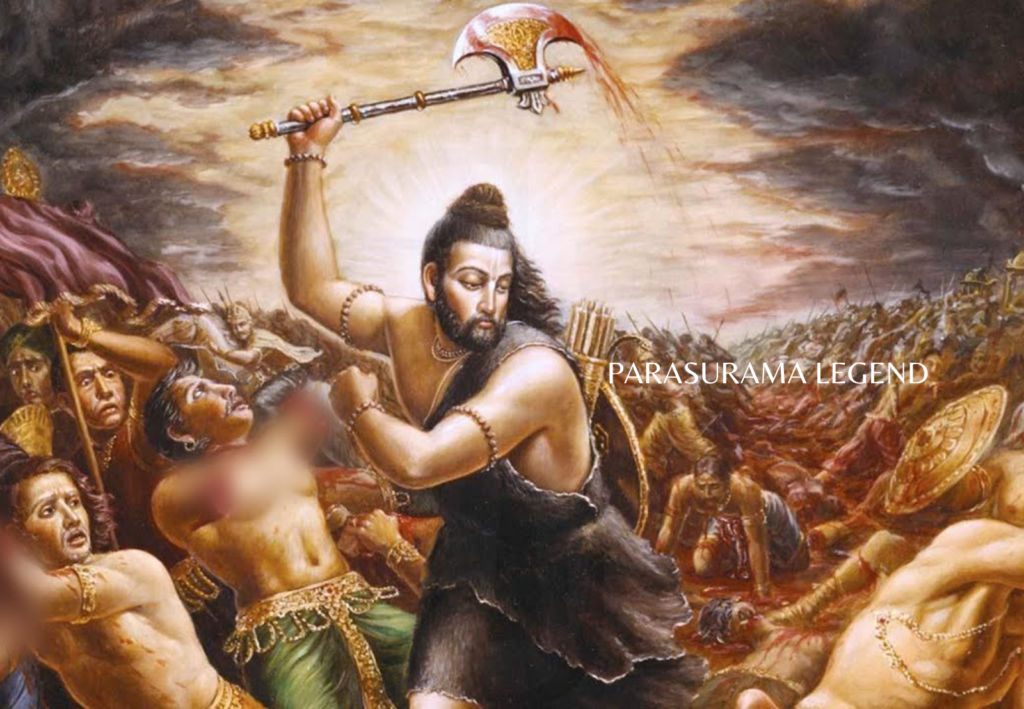
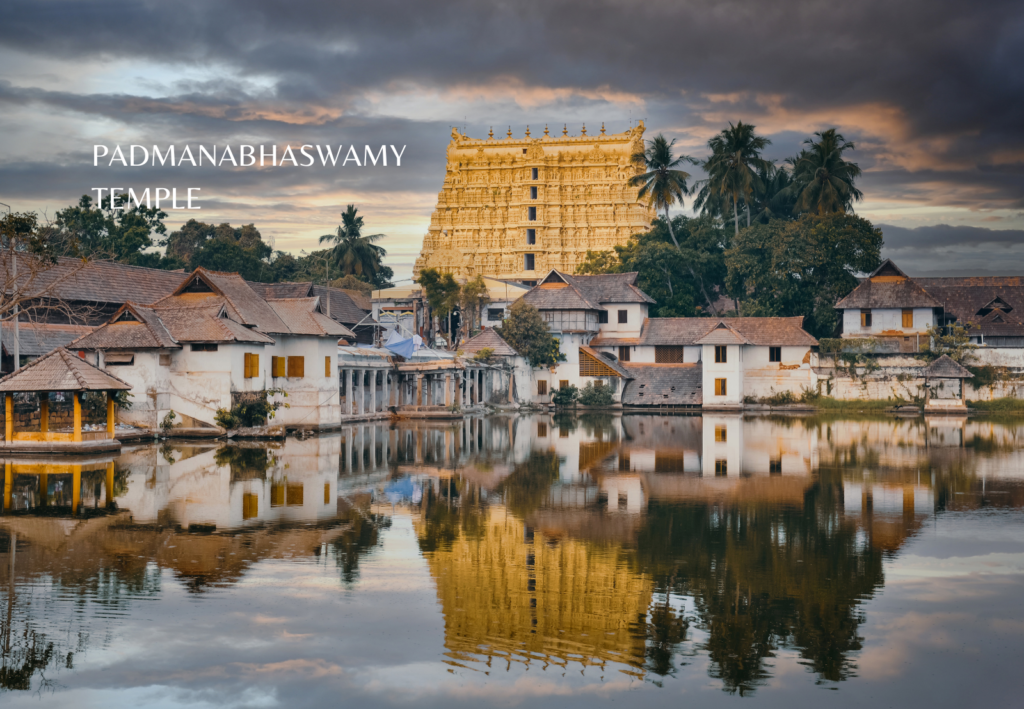

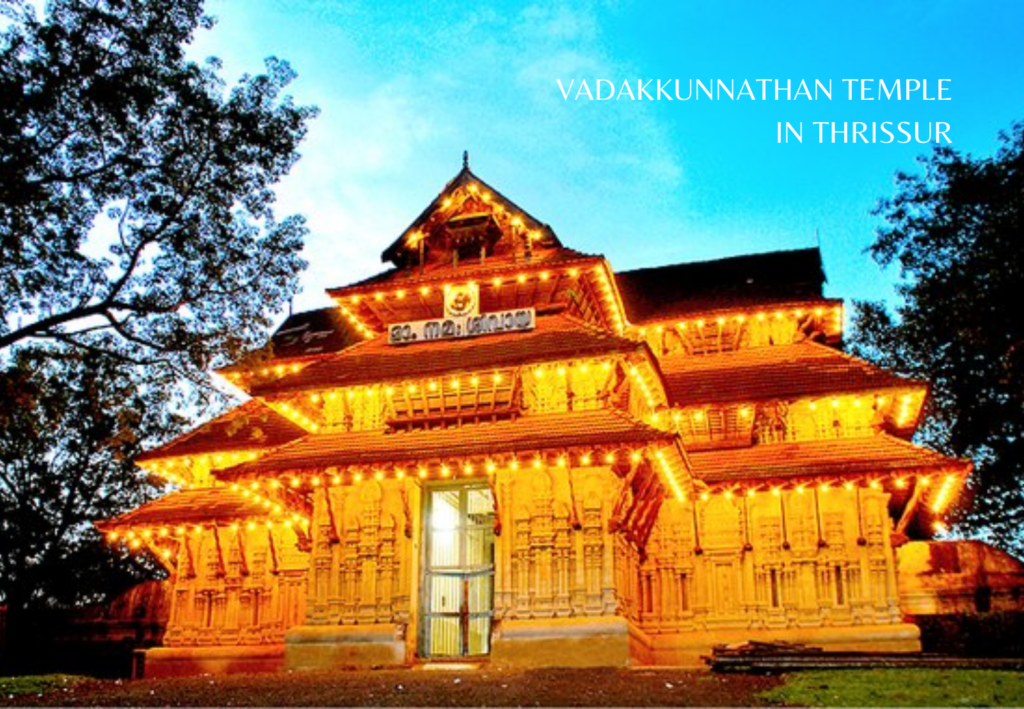
3.1 Religious Importance
Ever wondered why Kerela is called “God’s own Country”?
Well, here’s why.
This fact is closely associated with the mythological story of the creation of Kerala, known as Parasurama’s legend.
According to the legend, the sage Parasurama threw his axe into the sea, which resulted in the formation of the land of Kerala.
It’s believed that Parasurama’s creation represents the struggle between land and sea, and Kerala is considered a land reclaimed from the mighty ocean.
The stories of temples, mosques, and churches here will leave you wondering how harmonious, secular, and divine this place can be, proving itself nothing less than “God’s own country”!
Let’s dig deeper!
Padmanabhaswamy Temple in Thiruvananthapuram is shrouded in mystery and holds a treasure trove of historical artifacts.
According to legends, the temple is believed to have been constructed by Lord Vishnu himself and has been a center of worship for centuries.
The temple’s architecture showcases the exquisite craftsmanship of Kerala’s traditional artisans, with intricate carvings and beautiful murals adorning its walls.
The temple gained global attention for its hidden vaults, referred to as the “Vaults of the Anantha,” which contained immense wealth and valuable artifacts, making it one of the wealthiest temples in the world.
Sabarimala Temple, nestled in the dense forests of the Western Ghats, holds a significant place in Hindu mythology.
It is believed to be the place where Lord Ayyappa, the son of Lord Shiva and Mohini (an avatar of Lord Vishnu), meditated after defeating the demoness Mahishi.
The temple stands atop the Sabarimala hill, accessible through a rigorous pilgrimage marked by a 41-day fasting period and a challenging trek.
Sabarimala Temple is also famous for its “Pathinettam Padi,” the 18 sacred steps that devotees climb to seek Lord Ayyappa’s blessings.
The customs and rituals associated with Sabarimala Temple are deeply rooted in tradition and reflect the devotion and dedication of the devotees who undertake this spiritual journey.
Speaking of mythology, Kerala has a rich tradition of temple festivals, and one such iconic festival is the Thrissur Pooram.
It’s a grand celebration at the Vadakkunnathan Temple in Thrissur, where magnificent processions of decorated elephants, traditional music, and vibrant fireworks take center stage.
The festival brings together people from all walks of life to witness the spectacular display of devotion, cultural heritage, and a sense of community bonding.
Christianity, too, has a long and rich history in Kerala, dating back to the arrival of St. Thomas, one of the twelve apostles of Jesus Christ. According to tradition, St. Thomas landed in Kerala in the 1st century AD and established Christian communities along the Malabar Coast.
The Syro-Malabar Catholic Church, one of the oldest Christian communities in India, has its roots in Kerala.
The St. Francis Church in Kochi, believed to be one of the oldest European churches in India, holds special significance. The Portuguese built it in the 16th century and showcased a blend of European and Indian architectural styles.

Islam, too, has a profound presence in Kerala’s culture.
The state witnessed the arrival of Islam through Arab traders and merchants around the 7th century AD.
The Muslim community, known as Mappilas, played a significant role in trade and cultural exchange.
Mosques showcasing a unique blend of Islamic and local architectural styles can be found across the region.
One remarkable mosque is the Cheraman Juma Masjid in Kodungallur, believed to be the first mosque in India, established in the 7th century AD.
Legend has it that the ruling king of Kodungallur received a dream message from Prophet Muhammad, leading to his conversion to Islam and the subsequent construction of the mosque.
The stories, traditions, and architectural marvels associated with these religions reflect the interplay of faith, history, and cultural exchange, making Kerala a truly fascinating destination.
“Kerala: A Journey Through the Ages” by K.R. Usha – is a book that provides a comprehensive overview of Kerala’s cultural heritage, tracing its history, art forms, festivals, and architectural wonders. It offers insights into the traditions that have shaped Kerala’s identity over the centuries.
4. Ayurvedic treatments and wellness practices
Kerala’s Ayurveda is rooted in a rich history that dates back thousands of years. Passed down through generations, this holistic system of medicine focuses on bringing harmony to the body, mind, and spirit.
It’s like a personalized prescription for wellness!
In Kerala, you’ll find many Ayurvedic treatments that cater to different needs.
Think of soothing massages, herbal therapies, and even personalized diet plans. These treatments are designed to not only relax your body but also revitalize your spirit.
Imagine the feeling of tension melting away as skilled therapists work their magic!
But it doesn’t stop there!
Kerala is home to world-class wellness resorts and centers like the award-winning
- Kairali Ayurvedic Healing Village, Palakkad,
- the world’s first Ayurvedic resort,
- Somatheeram Ayurveda Resort,
- Kovalam, The Nattika Beach Ayurveda Resort, Thrissur
And many more where you can immerse yourself in the healing ambiance.
These tranquil havens offer a range of authentic Ayurvedic treatments administered by knowledgeable doctors and therapists who have mastered the art of wellness.
One of the highlights of Kerala’s Ayurveda is the famous Panchakarma therapy. This specialized detoxification process involves a series of cleansing treatments, like massages, herbal steam baths, and nasal irrigation.
It’s like hitting the reset button for your body, flushing out toxins, and restoring balance.
Herbal medicines are at the heart of Ayurveda, and Kerala’s biodiversity provides a treasure trove of natural ingredients.
From turmeric and ginger to neem and ashwagandha, these herbs are carefully selected and used in various Ayurvedic preparations.
Now, let’s talk about yoga and meditation.
You can complement your Ayurvedic journey with yoga and meditation practices that promote physical fitness, mental clarity, and a deep connection with your inner self.
Believe it or not!
People from all over the world flock to Kerala for wellness tourism.
In fact, in 2019 alone, more than 1.5 million wellness tourists visited the region.
You will be startled to know that famous personalities like Oprah Winfrey, Prince Charles, Angelina Jolie, Neymar, Cristiano Ronaldo, and many more have also visited Kerala to explore traditional healing practices and wellness therapies.
That’s a testament to Kerala’s reputation as a wellness destination, offering authentic Ayurvedic experiences that leave you feeling rejuvenated and refreshed.
The Kerala government has been a champion of Ayurveda, supporting its growth and ensuring its authenticity. They’ve set up research institutes, wellness centers, and even a dedicated Ayurveda college.
So you can trust that you’re in good hands when it comes to your well-being.
If you’re curious about specific Ayurvedic treatments, there are plenty to choose from.
Whether it’s the indulgent Abhyanga massage, the blissful Shirodhara oil pour, the rejuvenating Pizhichil oil bath, or the soothing Nasya nasal therapy, each treatment offers a unique experience tailored to your needs.
Thus, whether you seek relaxation, rejuvenation, or specific health benefits, Kerala’s Ayurvedic offerings provide a unique opportunity to experience the healing power of this traditional system.
5. Kerala Cuisines
Kerala is known for its diverse and flavorful culinary traditions.
The cuisine is a delightful blend of spices, aromatic herbs, coconut, and an array of fresh ingredients. It truly reflects the region’s rich cultural heritage and the bountiful resources it offers.
One of the signature dishes of Kerala is the famous “Sadya,” a traditional feast served on a banana leaf.
It’s a grand affair that showcases a variety of vegetarian dishes, each bursting with unique flavors.
From the tangy Avial (mixed vegetable curry) to the creamy olan (ash gourd and coconut milk stew), every dish is a celebration of Kerala’s culinary prowess.
Seafood takes center stage in Kerala’s cuisine, thanks to its long coastline and abundant marine life.
The state is renowned for its lip-smacking seafood delicacies, such as the spicy and tangy fish curry known as “Meen Curry” or the aromatic and flavorful “Karimeen Pollichathu” (grilled pearl spot fish wrapped in banana leaf).
Coconut plays a vital role in Kerala’s cuisine, and you’ll find it in various forms, adding a unique touch to the dishes.
Whether it’s grated coconut used in curries, coconut milk in gravies, or coconut oil for cooking, it imparts a rich and distinct flavor to the food.
Rice is a staple in Kerala, and you’ll find a wide variety of rice-based dishes to savor. From the fluffy and fragrant “Ghee Rice” to the aromatic and spicy “Biryani,” each rice dish is a culinary delight that will leave you wanting more.
Now, let's talk about Snacks and Sweets
Kerala offers a delectable array of snacks that are perfect for munching any time of the day.
Treat yourself to the crispy and savory “Kozhukatta” (rice dumplings), the deep-fried goodness of “Banana Chips,” or the steamed rice cakes known as “Puttu.” And for those with a sweet tooth, indulge in the irresistible “Payasam” (rice pudding) or the delicate and sweet “Unniyappam” (rice and jaggery fritters).
Kerala is also famous for its unique beverages. Sip on a refreshing glass of “Sambharam” (spiced buttermilk) to beat the heat or savor the rich flavors of “Kaapi” (South Indian filter coffee) that will awaken your senses.
One interesting fact about Kerala’s cuisine is its emphasis on balance and harmony.
The traditional meal includes a combination of flavors such as sweet, salty, sour, and spicy, all in perfect harmony. It’s a culinary philosophy that aims to create a well-rounded and satisfying dining experience.
Whether you’re a vegetarian or a meat lover, a spice enthusiast, or someone who prefers milder flavors, Kerala’s cuisine has something for everyone.
The dishes are a reflection of the region’s cultural diversity and its love for gastronomic delights.

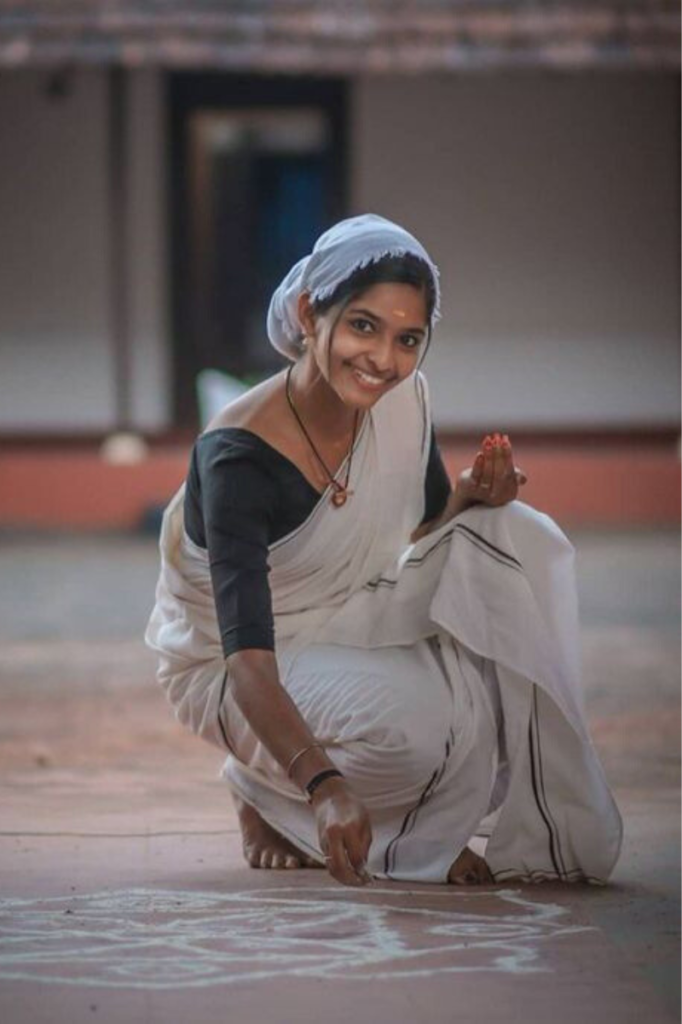

6. People’s lifestyle
The lifestyle of people in Kerala is influenced by its rich cultural heritage, natural surroundings, and deep-rooted traditions.
Known for its laid-back and relaxed atmosphere and extensive secularism, Kerala offers a unique way of life deeply connected to nature and community.
They value family bonds, community interactions, and a close-knit social structure. The concept of “extended family” is prevalent, where several generations live under one roof, fostering solid familial relationships.
Keralites have a deep appreciation for nature and sustainable living.
The state’s lush green landscapes, backwaters, and serene beaches have a significant impact on their lifestyle choices.
Many Keralites practice eco-friendly habits, such as organic farming, rainwater harvesting, and preservation of natural resources.
Education and literacy hold great importance in Kerala, making it one of the most literate states in India.
The emphasis on education has led to a highly educated workforce with a strong focus on intellectual pursuits, research, and innovation.
The cuisine, as we discussed earlier, is an integral part of the lifestyle in Kerala.
Food is central to social gatherings and celebrations, bringing families and communities together.
Keralites take pride in their culinary traditions and enjoy sharing their delicious meals with others.
Keralites also have a strong sense of social responsibility and civic engagement.
Kerala is one of the most secular states in India, where people of all religions live harmoniously.
They actively participate in community development programs, religious occasions of different religions, environmental initiatives, and social welfare activities.
The concept of “grama sabhas” (village assemblies) is prevalent, where local communities come together to address issues, make decisions, and promote collective well-being.
Overall, the lifestyle of people in Kerala reflects a harmonious blend of tradition, nature, community, and a deep-rooted connection to their cultural heritage.
It is this unique way of life that adds to the charm and allure of “God’s Own Country.”
Final Thoughts
In conclusion, Kerala stands out as a remarkable destination that truly lives up to its reputation as “God’s Own Country.”
Its breathtaking landscapes, serene backwaters, pristine beaches, and enchanting waterfalls create a picturesque setting that is hard to match.
The state’s rich cultural heritage, with its diverse traditions, festivals, and architectural wonders, adds depth and vibrancy to the overall experience.
The warmth and hospitality of the people of Kerala make visitors feel right at home, embracing them with open arms.
Whether you’re seeking relaxation, adventure, or a deep connection with nature and culture, Kerala offers it all. It is a place where traditions are celebrated, nature thrives, and the soul finds solace.
So, if you’re looking for an unforgettable journey that combines natural beauty, cultural richness, and warm-hearted people, look no further than the enchanting land of Kerala.
Subscribe to new post
The One Liner
Useful Links
Order Related Queries
Useful Links
Order Related Queries

